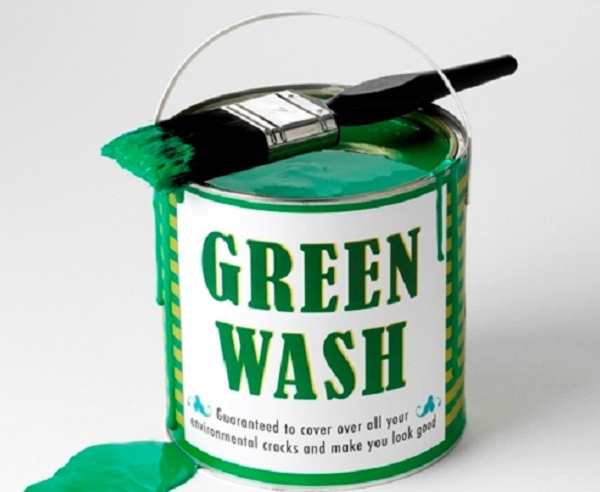
Our planet is getting warmer with every passing day, and every year new temperature records are set, more and more erratic weather patterns are observed, and all the credit to this planet altering phenomenon is attributed to global warming. One of the major factors that contribute to global warming is the release of the green house gases (carbon dioxide, methane, chloro-floro carbons etc). Nowadays, everyone is aware of this and wants to do his/her bit to reduce this adverse effect on the planet. This fact is being leveraged by many corporations and they have come up with so called ‘green products’ which has led to ‘greenwashing’. It refers to public relations tricks or superficial actions that a company employs to improve its public image or green PR without them actually doing much for the environment. Let us see 10 of the worst green washed products available in the market.
1. Coal

Coal has been seen by many industries as ‘clean’ whereas there is nothing clean about it. It is the least efficient and dirtiest means to produce electricity. A ton of coal produces about 1,300 pounds of greenhouse gases. Efficiency of a coal plant is only 35%, thus it means that on an average a 500 MW coal based power plant would burn 1.4 million tons of coal and out of that 65% would result in waste of energy and toxic gases released into atmosphere.
2. Soft drinks

Only 3% of water available on earth is fresh water, and most of it is trapped in ice sheets, in ground water or glaciers. Only about 0.8% of total water is available for drinking, and with ever increasing pressure on natural resources, it becomes vital to preserve natural reserves of water. Soft drink companies like coke often talk about water conservations and join “work” for saving important water bodies, but they don’t reveal the role they play in depletion of water resources. It takes about 5 liters of water to produce 2 liters of soft drinks. In 2008, Coca-Cola and its bottlers used 93 billion gallons of water which is more than water requirement of many countries.
3. Bottled Water

It is cited as one of the purest and cleanest form of water to drink. But is it really worth it? It is filled in plastic bottles which are non biodegradable and non reusable. It takes about three times to make these bottles than the water it contains. Mostly these bottles are deposited in land fills, for which energy is required and harmful gases are released. Also, it is expensive, as the water itself costs only 10% of the total cost.
4. Bio-fuels

They are being hailed as the replacement for fossil fuels but being only cleaner and cheaper. That is not true as to generate bio fuels, a lot of vegetables, corn and plants are required. Also, earth doesn’t have the required arable land that would cater to both food consumption and biofuel demands. As a result, what is happening now is that most of the farmers are selling their crops for bio fuels due to lucrative prices, which in turn is leading to food shortage and increase in the prices of food.
5. Paper Tableware

Nowadays, the paper plates are in fashion as they are bio degradable and eco friendly. But the fact is most of the paper tableware is non reusable and non recyclable. Thus, they end up increasing the garbage that is dumped in landfills and hence requires more space. Apart from this, the huge demand for paperware also means cutting more trees to ensure the availability of paper.
6. Household products

Many household products are now marketed as biodegradable or eco friendly. They define eco friendly as products that don’t have any direct toxins and biodegradable as something that would breakdown into different components due to natural action. What they don’t say is how much time it would take to breakdown and indirect toxins.
7. Aitravel

Many aircraft carriers have advertised that they have introduced reforms to reduce greenhouse emissions (British Airways) that are caused by air travel or that their emissions are comparable if not less than some of hybrid cars (easyJet). What they fail to tell you is what percentage the reduced emissions constitute of total emission. As in most cases, it is less than 1%. They also don’t tell the detailed calculations they use for comparing emissions.
8. Toys

Toys manufactures are trying many tricks to make their products look green. They sell toys in a paper bag or recycled paper and put recyclable logo on the product indicating it is recyclable and hence a more environment friendly product. But the fact remains that most of the toys are made of non biodegradable plastics and are made of poisonous chemicals like arsenic, lead and mercury.
9. Meat products

Many companies label their products as all natural, wholesome and premium quality. But most of their meat come from poultry farms where a large number of animals and birds are raised for the sole purpose of slaughtering. Also, a large quantity of antibiotics are used to minimize sickness, and often enzymes and hormones to speed up growth.
10. Laundry Detergent

Many detergents in their advertising try to convince the users that by being more efficient (Tide High Efficiency, for instance) they would use less water and hence are environment friendly. But they don’t tell that the plastic bottles are non biodegradable and consume a lot of space in landfills. The chemicals used in the detergents cause a lot of damage to the soils and to field. They can even be dangerous to humans if used in higher concentration.




